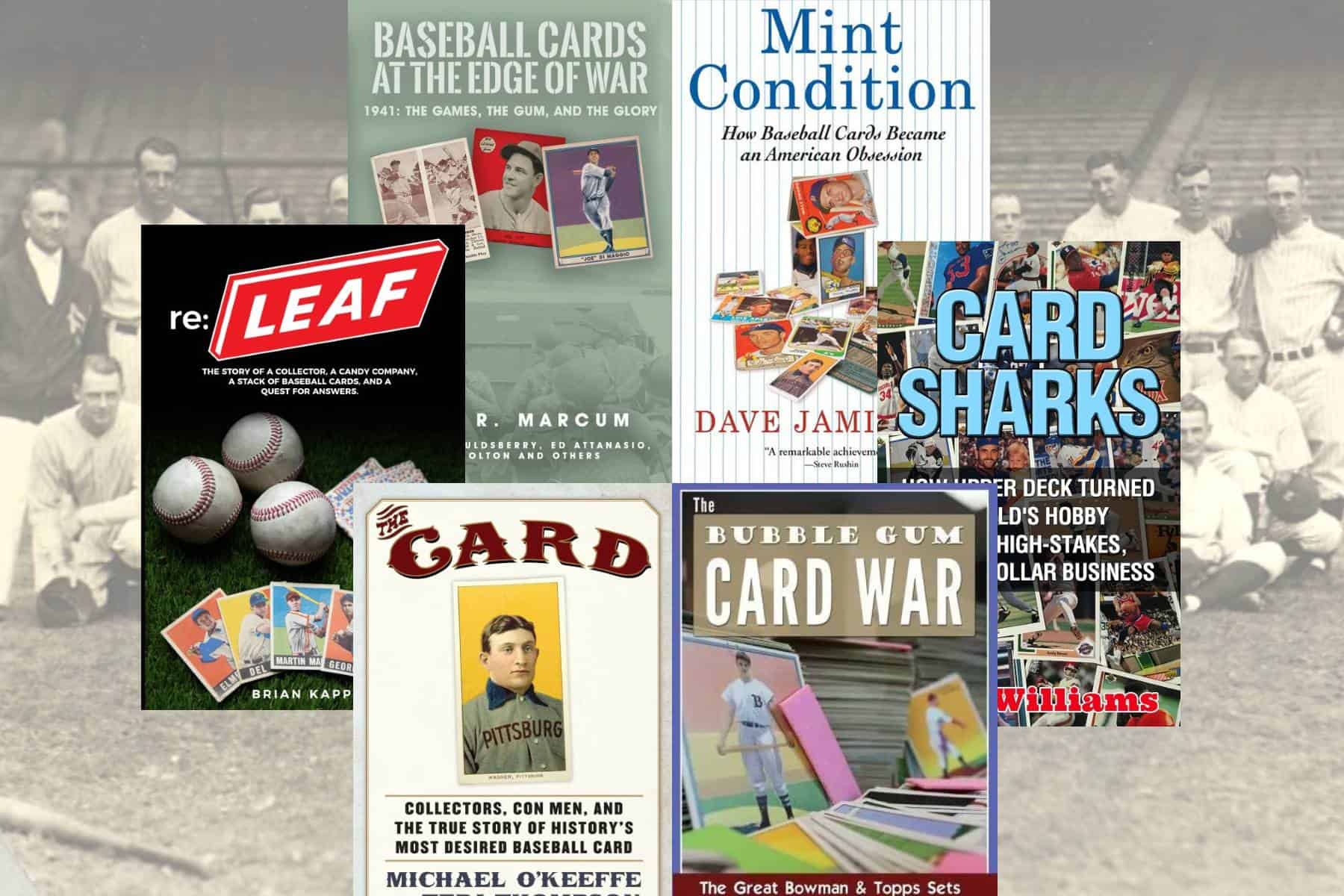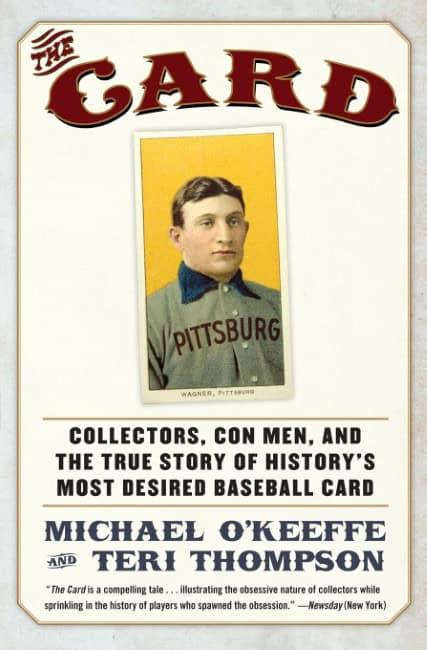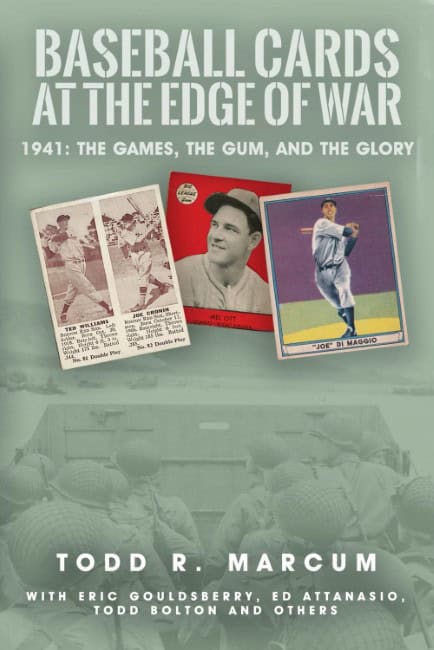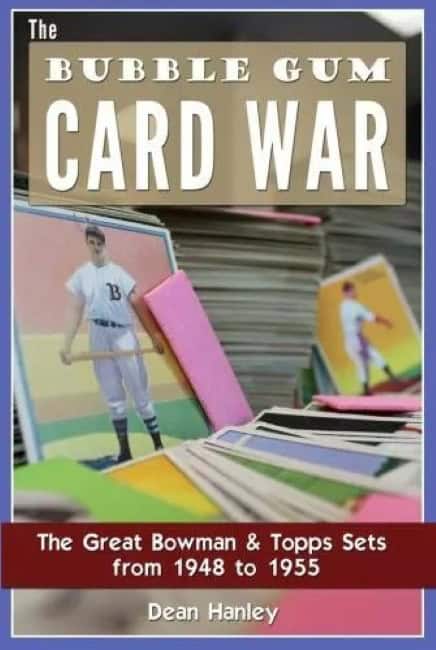Your cart is currently empty!

[sc name=”ad-250×250″][/sc]
Baseball cards offer more than just a way to track players and seasons—they provide a unique lens through which we can view history itself. From early tobacco cards to the iconic Topps sets, baseball card collecting has evolved alongside significant cultural and historical events. Baseball card history books document these shifts, capturing the essence of the times and offering insights into both the sport and society. For example, cards produced during World War II reflect the era’s scarcity of resources. Meanwhile, the overproduction of the 1980s and 1990s mirrors an economic shift in the hobby.
Understanding baseball card history through these books is vital for collectors and anyone interested in the intersection of sports and culture. These texts preserve the stories of how card designs changed, how the market evolved, and how the hobby was influenced by technological advancements and social movements. By studying these baseball card history books, we gain a deeper appreciation of the role they play in documenting the sport’s milestones and the historical moments that shaped them.
The Card: Collectors, Con Men, and the True Story of History’s Most Desired Baseball Card
by Michael O’Keeffe and Teri Thompson

O’Keeffe and Thompson’s The Card takes readers into the thrilling and often murky world of high-stakes baseball card collecting, centered around one of the hobby’s most famous artifacts—the T206 Honus Wagner. This book dives deep into the card’s mysterious origins. The book chronicles how the card became such an object of intense desire, fetching millions at auctions.
The authors unravel the complex layers surrounding Wagner’s card. The company pulled it from production for unknown reasons. Some speculate that Wagner objected to his image being used to promote tobacco, while others argue it was due to financial disputes. Regardless, the card’s scarcity created an aura of myth, transforming it into the holy grail of sports collectibles. The story truly takes off when O’Keeffe and Thompson expose the forgeries, frauds, and manipulations surrounding the Wagner card. This includes the controversy surrounding a specific high-grade example purchased by hockey legend Wayne Gretzky. Questions of authenticity and allegations of trimming—the practice of physically altering cards to improve their condition—plague the narrative, raising issues about integrity within the industry.
The significance of The Card lies in its meticulous investigation into the darker side of collecting. It sheds light on the dishonest practices that can plague high-end memorabilia. It also offers a fascinating window into the psychology of obsession within the hobby. Critical feedback often praises the book’s depth and investigative rigor. Some readers have noted that the focus on legal cases and fraud can feel overly technical, especially for those more interested in the card’s history rather than the controversies surrounding it.
Baseball Cards at the Edge of War: 1941: The Games, The Gum, and The Glory
by Todd R. Marcum

This book offers an in-depth look at the 1941 baseball card season, a pivotal year that marked the end of an era for both the sport and the collecting hobby, as the United States entered World War II. The author explores how the war affected baseball card production. He focuses on two key companies: Play Ball and Goudey. The book emphasizes the importance of the 1941 season. This saw some of baseball’s most iconic players, like Joe DiMaggio and Ted Williams, reach career peaks. Alongside the on-field glory, the author explains how these cards became some of the last major releases before the war caused a halt in production.
One of the most interesting aspects of Baseball Cards at the Edge of War is its detailed analysis of how the card companies had to navigate the challenges of wartime production. Resources like paper and ink were in short supply, and the demand for non-essential items like baseball cards naturally dwindled. As a result, cards from this era are not only rare but also serve as relics of a bygone time in American history. The book also captures the nostalgia of the pre-war era, with stunning reproductions of cards and stories that illustrate the emotional connection between baseball and the American public during difficult times.
The significance of this book lies in its focus on an underexplored period in baseball card history. It effectively documents how the war impacted not just the sport but also the businesses surrounding it. Critical reception of the book has been generally positive, with readers appreciating its role in the canon of baseball card history books, as well as the historical detail and the way it ties baseball card collecting to broader societal shifts. However, the writing sometimes becomes overly detailed, focusing on minutiae that may not appeal to casual readers or those less interested in the technical aspects of card production.
The Bubble Gum Card War: The Great Bowman and Topps Sets from 1948 to 1955
by Dean Hanley

Dean Hanley’s The Bubble Gum Card War is one of several baseball card history books targeting a particular era. It provides a comprehensive look at one of the most important rivalries in the history of baseball card collecting. The battle between Bowman and Topps for market dominance during the post-war years spanned from 1948 to 1955. This period saw both companies push the boundaries of card design, marketing strategies, and player contracts. Each attempted to outdo the other in a rapidly growing hobby. Hanley meticulously details the iconic card sets released during this time.
The book covers Bowman’s early dominance in the baseball card market, as it introduced a new generation of collectors to colorful, action-packed cards. Bowman’s attention to detail and its ability to secure exclusive contracts with players made it the leader in the field. However, Topps soon entered the fray, introducing its now-legendary 1952 set. It revolutionized the hobby with larger cards, bold designs, and the inclusion of gum in every pack. The rivalry culminated in legal battles over player contracts and ultimately saw Topps emerge victorious. This led to Bowman’s absorption by Topps in 1956.
The significance of The Bubble Gum Card War is in its exploration of a transformative era in baseball card collecting. It highlights innovations that shaped the card market, from statistics on cards to Bowman’s pioneering use of color photography. For collectors, Hanley’s book is a treasure trove of information about the origins of baseball’s most iconic sets. Critically, the book has been praised for its thorough research and attention to detail. However, some readers have noted that the writing has a focus on factual information over storytelling. As a result, it may appeal more to serious collectors than to casual fans of baseball history.
Re: LEAF: The Story of a Collector, a Candy Company, a Stack of Baseball Cards, and a Quest for Answers
by Brian Kappel

In Re: LEAF, author Brian Kappel embarks on a personal quest to unravel the mysteries surrounding the LEAF baseball card set from the late 1940s. This is a set that has intrigued collectors for decades. While it is one of several baseball card history books covering manufacturers, it is also part detective story. Kappel attempts to piece together the origins of this iconic but often overlooked card series. Yet the set remains shrouded in mystery, with inconsistencies in its production and distribution that have puzzled collectors for years.
Kappel’s narrative is deeply personal. He weaves his own experiences as a collector into the larger story of the LEAF set. He delves into archival research, interviews with industry experts, and a meticulous examination of the cards themselves. In doing so, he uncovers the truth behind their production. The book also explores the broader context of the post-war era. It was a time when baseball cards were becoming an increasingly popular pastime for American children. However, the industry was still in its infancy compared to the juggernaut it would become in the following decades.
The significance of Re: LEAF lies in its focus on a lesser-known but historically important set. Kappel’s personal connection to the story, which adds a unique dimension to the book. For collectors, it offers a valuable glimpse into the early years of post-war baseball card production. Readers have praised the book as engaging, with an almost detective-like narrative. Kappel’s passion for the subject shines through in his writing. However, some readers have noted that the book’s niche focus may limit its appeal to a broader audience. The deep dive into the minutiae of the LEAF set primarily attracts serious collectors and historians.
Card Sharks: How Upper Deck Turned a Child’s Hobby into a High-Stakes, Billion-Dollar Business
by Pete Williams

Author Pete Williams’s Card Sharks is a deep dive into the rise of Upper Deck. The company transformed the baseball card industry in the late 1980s and set a new standard for the hobby. Williams recounts the full story of Upper Deck. He tracks the early days, with its creation by a group of investors looking to disrupt the market. He follows the company’s meteoric rise and eventual legal and financial struggles. The book paints a picture of a company that was as innovative and also controversial.
Upper Deck revolutionized the industry with several key innovations. This included the use of holograms to prevent counterfeiting and the introduction of high-quality photography and thicker card stock. These features helped elevate baseball cards from children’s toys to serious collectibles. Immediately, Upper Deck’s 1989 set, featuring the iconic Ken Griffey Jr. rookie card, became a landmark release in the hobby. However, as Williams details, success also led to a series of legal battles, financial mismanagement, and controversies that tarnished its reputation.
Card Sharks explores how Upper Deck transformed the baseball card industry from a low-stakes hobby into a high-stakes business. It highlights both the positive and negative impacts of this transformation. Upper Deck’s innovations helped create a boom but also exposed the darker side of corporate greed and mismanagement. Readers have praised the book for its detailed account of Upper Deck’s rise and fall. However, some have found the focus on legal and financial issues to be less engaging. For anyone interested in the business side of the hobby, however, Card Sharks isa must-read. It offers a fascinating look at how a child’s pastime became a multi-billion-dollar industry.
Mint Condition: How Baseball Cards Became an American Obsession
by Dave Jamieson

This book provides a comprehensive history of baseball cards. It traces their evolution from 19th-century tobacco inserts to the modern era of high-tech collectibles. The book covers key moments in baseball card history. This includes the rise of bubble gum cards in the post-war era, the dominance of Topps throughout much of the 20th century, and the boom and bust of the junk wax era in the 1980s and 1990s. Jamieson also explores the psychological appeal of collecting. He examines why baseball cards have become such an integral part of American culture.
Jamieson’s narrative is wide-ranging. It covers not only the cards themselves but also the broader societal and economic factors that influenced the hobby’s development. He discusses how cards were used as marketing tools, first by tobacco companies and later by candy and gum manufacturers. He also covers how the introduction of statistics on the back of cards helped transform them into educational tools.
The significance of Mint Condition lies in its ability to provide a broad yet detailed overview of baseball card history. This makes it accessible to both casual fans and serious collectors. Jamieson’s writing is engaging and informative. He does an excellent job of tying the history of baseball cards to larger cultural and economic trends. Critics have praised the book for its thorough research and engaging storytelling. Some have noted that it occasionally glosses over certain niche areas of the hobby that might interest more dedicated collectors. Overall, Mint Condition is a must-read for fans interested in how baseball cards became a central part of American culture.
